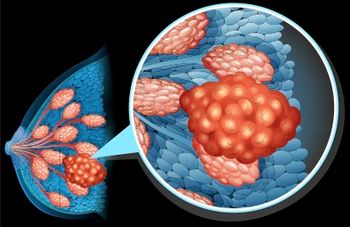
- ONCOLOGY Vol 13 No 11
- Volume 13
- Issue 11
Book Review: Breast Cancer
The editor of Breast Cancer is Daniel F. Roses, MD, a professor of surgery at New York University and director of the Comprehensive Breast Cancer Center at that institution. Its contributors include Pat Borgen, MD, from Memorial Sloan-Kettering, Armando Giuliano, MD, from the University of California, Alison Estabrook, MD, from St. Luke’s Roosevelt Hospital, Frea Schnabel, MD, from Columbia-Presbyterian, David Page, MD, from Vanderbilt University, Larry Norton, MD, from Memorial Sloan-Kettering, and John Neiderhuber, MD, from the University of Wisconsin Medical Center. All of these notable individuals have made significant contributions to the management of patients with breast cancer.
The editor of Breast Cancer is Daniel F. Roses, MD, a professor of surgery at New York University and director of the Comprehensive Breast Cancer Center at that institution. Its contributors include Pat Borgen, MD, from Memorial Sloan-Kettering, Armando Giuliano, MD, from the University of California, Alison Estabrook, MD, from St. Luke’s Roosevelt Hospital, Frea Schnabel, MD, from Columbia-Presbyterian, David Page, MD, from Vanderbilt University, Larry Norton, MD, from Memorial Sloan-Kettering, and John Neiderhuber, MD, from the University of Wisconsin Medical Center. All of these notable individuals have made significant contributions to the management of patients with breast cancer.
This book is one of several major texts focusing on diseases of the breast and breast cancer. The other texts include Cancer of the Breast by Donegan and Spratt, and two more extensive texts, Diseases of the Breast by Harris, Lichtman, Morrow, and Helmann, and The Breast, edited by Bland and Copeland. Breast Cancer is distinguished from these other references by being somewhat more readable.
The paragraph subtitles used throughout this text all take the form of questions. However, in some instances, the question format fragments the text. Throughout the book, there are factual inconsistencies in the discussion of specific topics. Also, the depth of discussion varies from one chapter to another.
An example of factual inconsistency can be found in the chapter on prevention by Etkind and Sparano. This chapter contains two contradictory statements about the complications of tamoxifen (Nolvadex). In one subheading, the drug is described as “relatively devoid of serious short-term or long-term side effects with the exception of an approximately twofold increased risk of endometrial carcinoma.” In that same chapter, tamoxifen is described as being associated with a “fivefold elevation in the risk of endometrial cancer and a twofold elevation in the risk of thrombophlebotic events.”
The same type of inconsistency is found in the chapter entitled “Multi-modality treatment of stage I and stage II breast cancer,” authored by John Niederhuber, MD. This chapter has a table devoted to postmastectomy radiation therapy for patients with advanced (T3 or T4) lesions. These are not patients with stage I and II disease. As a result, it is unclear whether the chapter focuses on early- or late-stage breast cancer.
In some cases, it is difficult to tell which audience the book is directed toward-a general audience seeking basic information or a specialized audience seeking specific details. For example, David Roses’ chapter entitled “Development of modern breast cancer treatment” is very well written and engaging. It provides extensive detail about the historical aspects of breast cancer management. This level of detail, however, is out of proportion to the discussion of more practical matters throughout the book.
In contrast, the book treats a very important matter-the medicolegal aspects of breast cancer care-in a superficial manner. The “discussion” of these issues is limited to a chart in the chapter on radiologic assessment. In contrast, the competing texts devote an entire chapter to medicolegal issues. Understanding these issues is crucial for both the breast cancer specialist and nonspecialist.
In summary, it is very difficult to write a text that satisfies the needs of all readers. Breast Cancer appears to be geared toward a general audience that may be seeking specific answers to questions. In many ways, it is very readable, but there are some factual inconsistencies and some variation in the level of detail provided. Breast Cancer is distinguished from other similar texts, in part, by its authors and by being somewhat more readable than its competition.
Articles in this issue
about 26 years ago
NCI Embarks on Quality Care Mapping Initiativesabout 26 years ago
ASCO Praises Patient Protection Bill Passed by Houseabout 26 years ago
Pain Management in Patients With Advanced Prostate CancerNewsletter
Stay up to date on recent advances in the multidisciplinary approach to cancer.


















































































